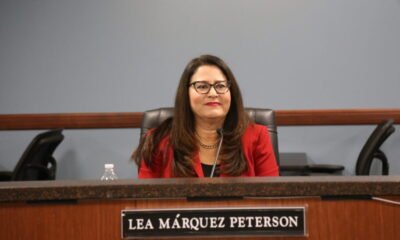arizona
Hanging & Dangling: Incomplete Vote Results Reveal Southern AZ’s Shifting Political Arena

As Arizona’s election results linger in uncertainty, Pima County’s ballot counting continues to unfold amidst a tumultuous political landscape. This county remains a focal point, reflecting a unique stance compared to national trends, regardless of the tight outcomes.
Current tallies indicate that Vice President Kamala Harris leads Donald Trump by 60,000 votes in Pima County. This positions her alongside Joe Biden and Hillary Clinton, demonstrating a potential reaffirmation of Democratic dominance in the region. The growing political dynamics suggest that Pima County is unlikely to shift towards more authoritarian ideologies.
Looking ahead to future elections, Democrats could secure all five seats on the Pima County Board of Supervisors by 2028, although Republicans might also carve a path to regain a majority. This competitive atmosphere underscores the importance of accountability among elected officials.
Analyzing voter behavior, it appears that the Latino vote in Pima County hasn’t experienced the same shift towards Trump as seen elsewhere. Matt Heinz, a Democrat, currently holds 64% of the vote in his Latino-majority district, indicating a slight deviation from previous elections but not a significant shift towards Republican preferences.
In District 3, Democrat Jennifer Allen seems poised to win, but faces a competitive challenge from Republican Janet Wittenbraker. Despite Allen’s lead, the district’s history as a swing area and Wittenbraker’s determined campaign suggest that the landscape remains fluid. Without strategic moves, Allen may face difficulties in solidifying her position.
Districts 1 and 4, traditionally Republican strongholds, are now under close scrutiny. Rex Scott, a Democrat, won District 1 by a narrow margin in 2020 and has maintained a progressive stance that resonates within an evolving voter base. In District 4, Democrat Vanessa Bechtol is in a tight race against incumbent Republican Steve Christy, indicating shifting allegiances among voters in Pima County.
The state’s legislative outlook remains precarious. While Republicans may hold a two-seat advantage in the House, competitive races are expected to come down to mere points. The dynamics have shifted significantly from previous years, questioning the Republican dominance that’s been historically entrenched in Arizona.
Pima County’s political fabric is evolving. Democrats are on the cusp of gaining control of the Maricopa County Board of Supervisors, which could substantially impact statewide races. The 17th Legislative District is particularly charged, with Democrats looking to flip key legislative seats amidst internal strife within the Republican ranks.
Concerns about the future revolve around representation. If trends continue, Republicans may dwindle in local governance despite their significant voter base in the county. The growing absence of Republican figures, coupled with the all-Democratic Tucson City Council, raises alarms about the representation of diverse viewpoints.
On a more positive note, Kristen Randall’s victory for the Pima Community College Governing Board is noteworthy. Her commitment to community engagement sets a precedent for governance that prioritizes accessibility and collaboration.
As Arizona’s political future looms large, community engagement becomes imperative. Civic organizations offer pathways for individuals to connect and mobilize, fostering resilience against rising authoritarian tendencies. While political landscapes shift, the foundations of democracy remain reliant on active participation and collective action.


















